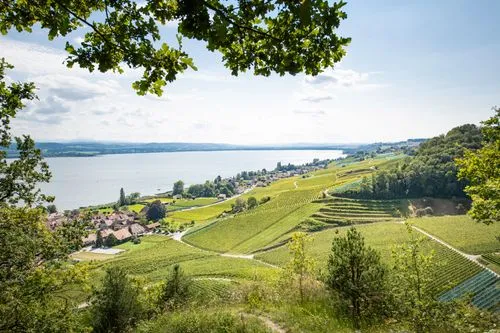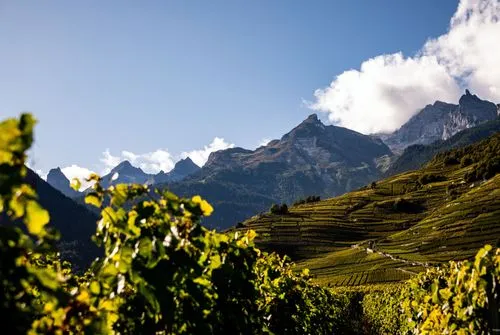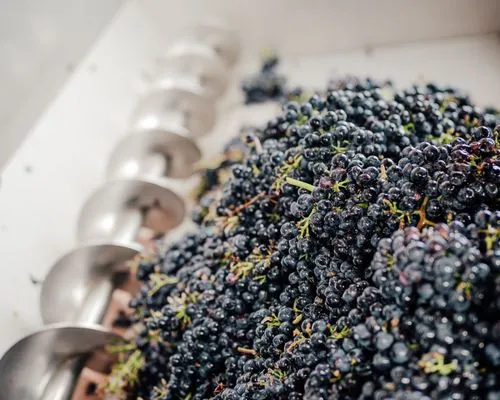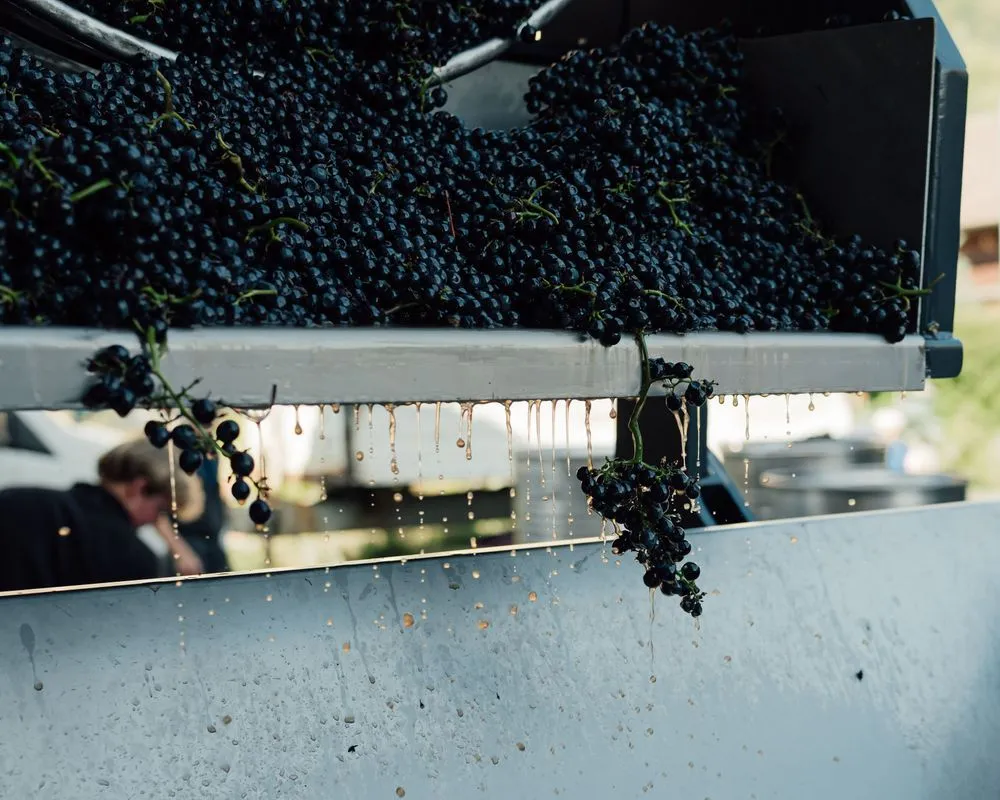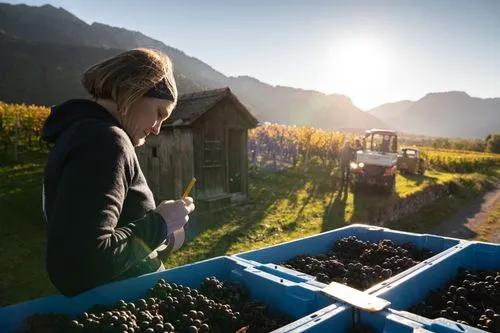Hand-crafted wines
[]
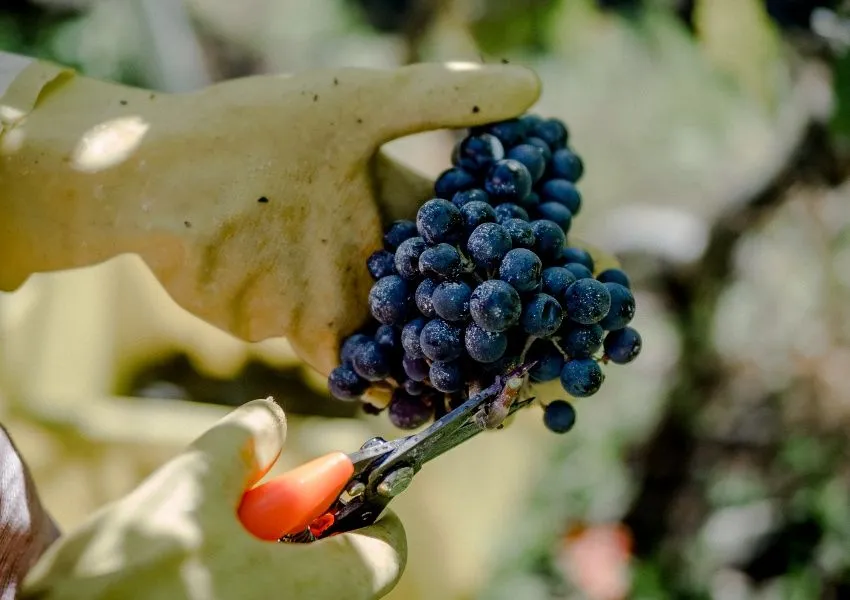
A vine requires very attentive and regular care throughout the year. Industrialization during the past two centuries allowed people to design machines that make the lives of vignerons easier, such as electric secaturs, for example. Nevertheless, the very special profile of Switzerland’s vineyards – with their many vines on steep slopes or on narrow pieces of land or in terraces – does not always make it possible to use the machines that we find on large farms in Europe and in the New World.
This is viticulture on a human scale, where the main tool needed to bring grapes to maturity remains the hand of the vigneron. It encourages the development of original wines that reflect the land that gives birth to them as well as the people who tend them. But it’s important to remember that this work comes at a cost. Specialists estimate that one hectare of vineyard planted in the traditional way requires 1,900 hours of work per year. Essentially, the double of a vineyard where large machines can be used. In Switzerland, the price of wine goes up yet again because salaries – agricultural and vineyard personnel – as well as expenses for supplies (bottles, labels, corks), insurance and marketing – are higher than in most other wine-producing countries. If Swiss wine
is often considered expensive, we must not ever forget that Swiss environmental, social and financial standards carry costs that must be added to those already engendered by an accident of topography that lies at the heart of the “smallest of the great wine regions”.
"Heroic" viticulture
The term describes vines grown on steep slopes that produce wines of great quality and which account for impressive landscapes. Even if these are only 7% of Europe’s vineyards, these vine parcels – whose steeps slopes are often tamed by terraces – are very numerous in Switzerland, a land covered by the Alps (60% of the territory) and Jura (10%) mountains. The slopes help ensure good sun exposure for grapes and provide an appropriate amount of rain. They have sculpted the landscape and strongly influenced Swiss viticulture. The mountains also provide their share of challenges, which Swiss growers have learned to deal with, using ingenious solutions.
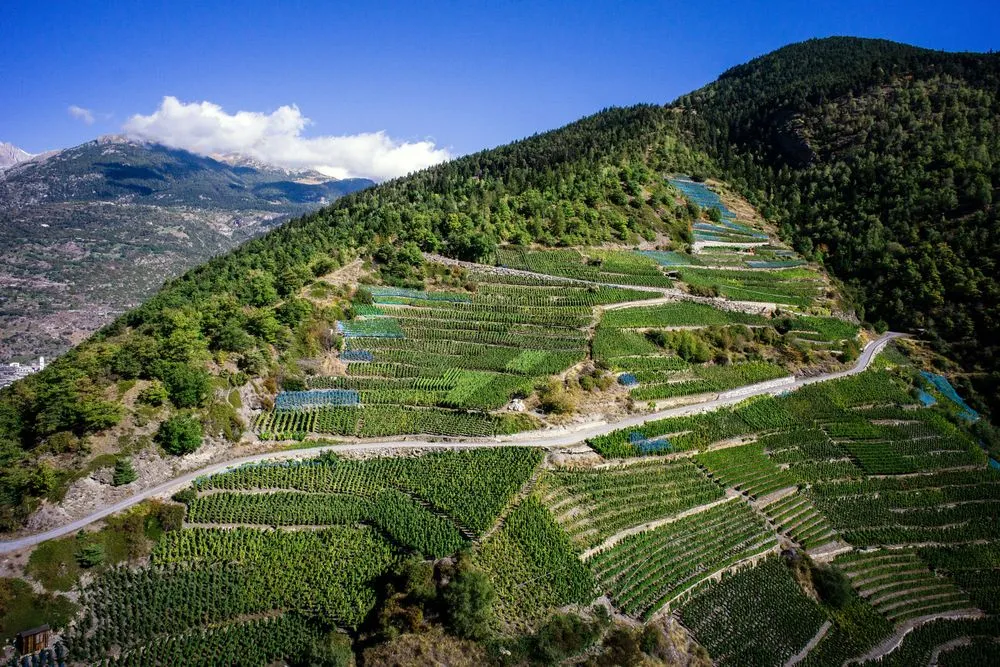
Wine at every altitude
Vines in Visperterminen, in Upper Valais, grow to 1,100 metres altitude. The vineyards are mostly planted with Savagnin Blanc, called Heida or Païen here. On the other side of the Alps, in canton Ticino, vine parcels planted in the Maggia delta grow at just 200 metres above sea level. Between these two extremes vines can be found at all altitudes, in general preferring slopes on the banks of rivers or overlooking the lakes. The most notable of these vineyards appears to plunge directly into the lake: Lavaux, in canton Vaud, which in 2007 was registered as a Unesco World Heritage Site.
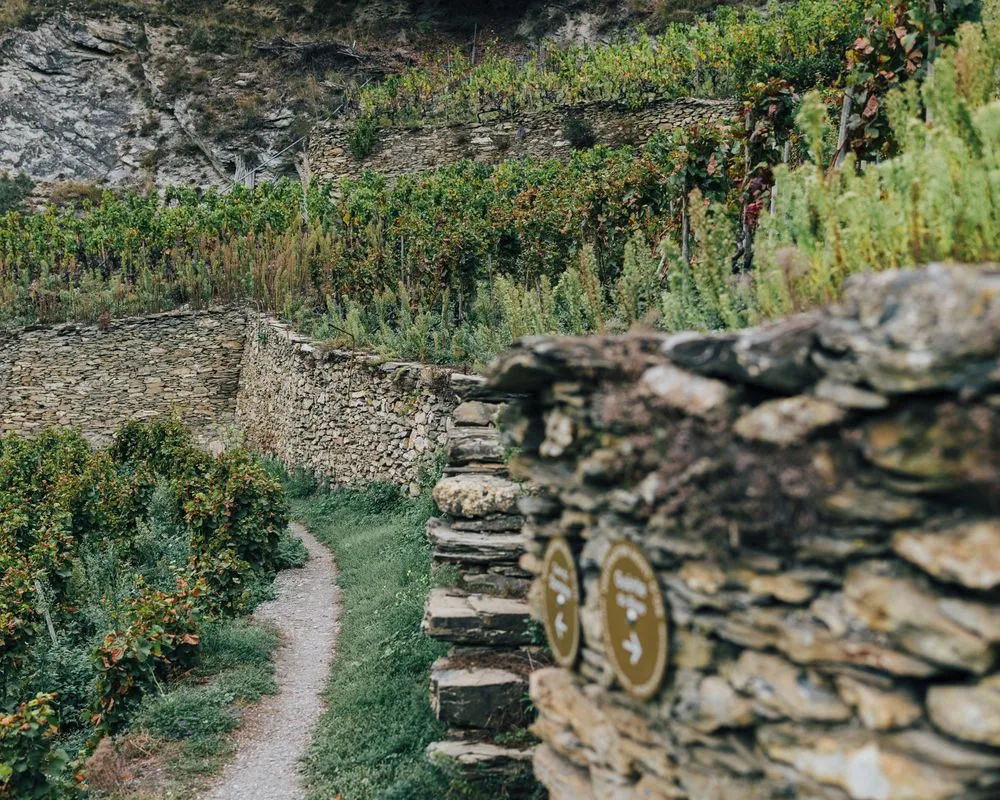
Thousands of terraced vines
In Valais alone there are an estimated 3,000 kilometres, if you lined them up, of terraced vineyard stone walls. You could probably double the figure if you add to these the walls built by vignerons in Lavaux, Chablais in Vaud, and Ticino and Graubünden, to name only the main areas. The most spectacular ones overlook the capital of Valais and are made of dry stone walls – no mortar, no cement, simply an ancient know-how to fight the combination of the passage of time, gravity and the elements. The walls are emblematic of the vineyards, but they also serve as a refuge for a great many fauna.
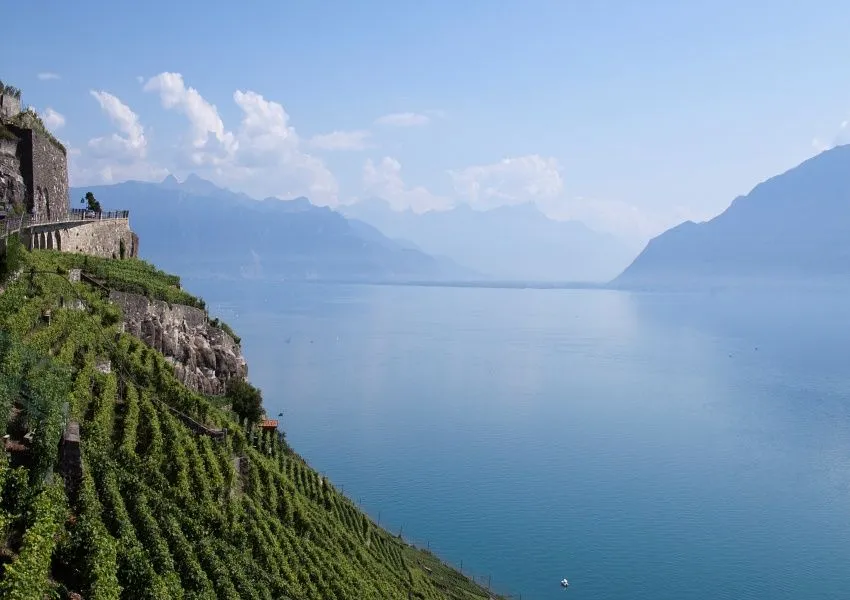
The search for water
Outside the Alpine regions most Swiss vineyards overlook a lake or a river. In Zurich you even find vines on the tiny island of Ufenau, which has belonged to the Einsiedeln convent for more than 1,000 years. In the mountain regions it’s often necessary to look for water to irrigate land which is not very deep and with runoff. The semi-desert climate of Valais has pushed its inhabitants to build a very dense irrigation network, the “bisses”, to carry water from the waterfalls and rushing streams to land under cultivation. Whether they are still used for agriculture or not, the bisses are greatly appreciated as hiking trails.
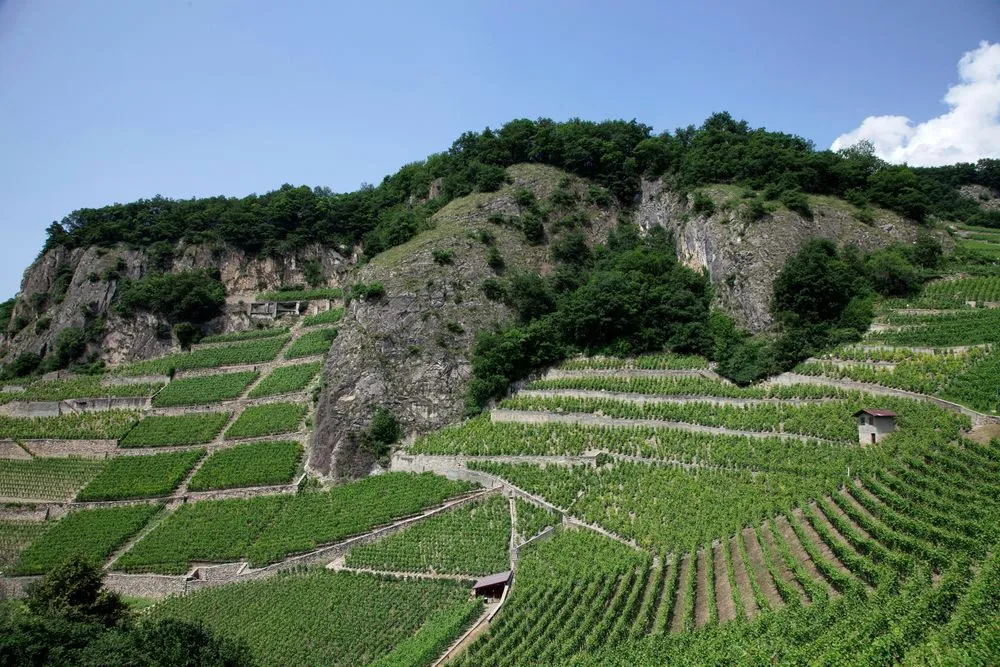
Falling rocks, wines of repute
In 1584, a landslide buried the village of Yvorne, in canton Vaud’s Chablais region, and the vineyards that surrounded it. Chasselas grapes that are notable for their mineral aromas have since grown on this terroir where the soil is composed of debris carried by the catastrophe, locally known as “ovaille”, a regional term that means disaster. Landslides elsewhere, far older, created the right conditions for the development of very high quality vineyards. Among the more spectacular: the Bürgli vineyards in Glaris, those of Domat Ems in Graubünden, the Val Blenio in Ticino and those at the foot of the Jura mountains, in the Bernese part of the Three Lakes region.
Articles related to sustainability
To visit our site, you must be of legal drinking age in your country of residence.

